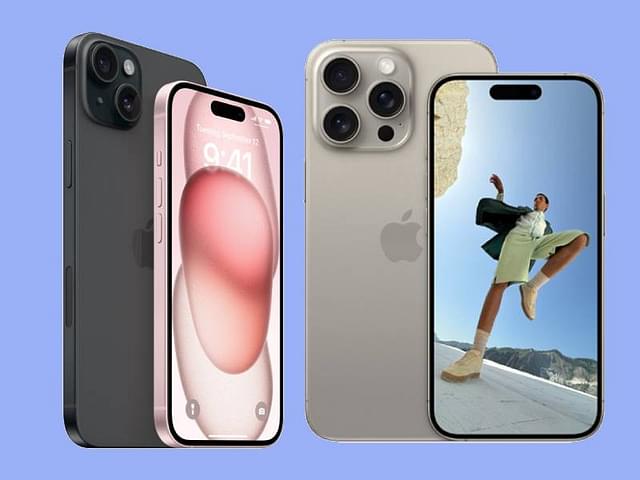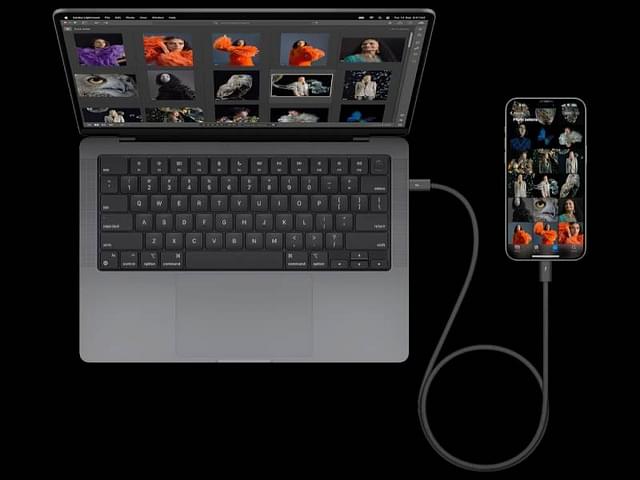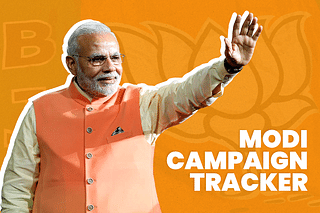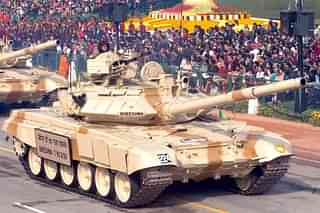Technology
Indians Can Now Buy A Made-In-India iPhone — In Its Fifteenth Avatar Of Innovation
Anand Parthasarathy
Sep 13, 2023, 04:11 PM | Updated 04:11 PM IST
Save & read from anywhere!
Bookmark stories for easy access on any device or the Swarajya app.

On 9 January 2007, Apple co-founder and CEO, the late Steve Jobs came on stage at the MacWorld convention and previewed the company’s first smartphone, that was to go on sale six months later.
It was a revolutionary product: the first phone without a keyboard and with a touch screen; the first with a built-in MP3 music player and a full-function web browser.
The device when it became available turned out to have a 3.5 inch screen and a 2-megapixel camera. The 4 GB and 8 GB versions were priced at $499 and $599 — making it by far the priciest mobile phone then on offer.
The price hardly seemed to matter to customers in the US who embraced that first iPhone like no other personal technology tool.
A year later, Apple launched the iPhone 3G, cannily harnessing the faster 3G networks that were coming up — and adding a GPS sensor which provided location services. The price was slashed to $199 and $299 for the 8 GB and 16 GB variants.
The combo of reduced prices and new features ensured that Apple now had an iron grip on the smartphone market — in American and select European markets where it chose to sell. In the first nine years, the iPhone crossed one billion in sales.
The mobile phone market meanwhile, had expanded: Google introduced the Android operating system in 2008 and offered free licenses to manufacturers, soon capturing the major share of phones in price-sensitive markets like India.
Manufacture In India
Apple hardly marketed the iPhone here for over a decade and Indian buyers had to deal with higher asking prices and long delays in availability after the US launch.
It continues to be a premium product even after Apple set up retail outlets and in recent years, began assembling iPhones in India-based contract manufacturing plants owned by Foxconn, Pegatron and Wistron (soon a Tata company).
Indeed the new iPhone 15 that the company unveiled at its Cupertino (California, US) headquarters on 12 September is known to be made right now, at Foxconn’s Sriperumbudur plant near Chennai, among a dozen other global locations and will be available to Indian buyers simultaneously with customers abroad.
The iPhone 15 will sell for Rs 79,900, while the iPhone 15 Pro will retail for Rs 1,34,900 — so the phones remain among the costliest handsets in the market and its India sales, as a percentage of all mobile phones, will likely remain in single digits.
But these numbers alone don’t tell the full story of iPhones — which have year after year, offered carefully-crafted innovations that have later trickled to other sectors like Android phones.
After it disrupted the hand phone business in 2007 with the first touchscreen device, and adopted the 3G standard a year later, Apple introduced video chat in the 2010 iPhone 4, as well as, what then was “high resolution” in displays: 640 x 960 pixels on a 3.5 inch screen.
A sick Steve Jobs was replaced by new Apple CEO Tim Cook, who unveiled the iPhone 4S in 2011 — with a powerful dual core processor, hitherto used only in the iPad, as well as, jumbo storage of 64 GB in a version that was priced at $399.
By 2014, screen size had grown to 4.7 inch and 5.5 inch in the two variants of iPhone 6 which offered another innovation NFC or near field communication to enable payments from phones using Apple Pay.
In 2016, Apple controversially removed the audio jack with iPhone 7, which forced many users with legacy headphones to invest in an adapter. It was an “innovation” that the Android world chose to ignore.
A Decade Of The iPhone
To celebrate a decade of iPhones, Apple named the 2017 model iPhone X and added new features — dual cameras and wireless charging.
The iPhone 11 in 2019 offered 4K video, wide angle and slow motion shooting. The iPhone 12 in 2020, for the first time offered a mini version with a 5.4 inch screen for $699, in addition to the larger model.
The trend continued in 2020 and 2021, with mini options of iPhone 12 and 13 and with incremental changes to the cameras like Dolby vision.
The 2022 models of iPhone 14 had the same prices and sizes as iPhone 13 and a 48 MP camera in the pro version.


New this year in the iPhone 15 pro is the use of aerospace-grade titanium, which makes the phone much lighter. Also new is the 120 mm, 10x optical zoom for the main 48 MP camera, in all the variants.
The biggest change is that Apple has finally adopted the universal Type-C charging port and abandoned its proprietary lighting charging cable — a decision forced on Apple by much of the world, led by the European Union mandating a single USB standard for the mobile phone industry.
Buying an iPhone 15 has become easy for Indians who are able to book a device at the iPhone India site.
There will be many who aspire for this premium product that continues to preserve its elite space by always giving its customers something new, useful and hype-worthy.
Save & read from anywhere!
Bookmark stories for easy access on any device or the Swarajya app.
Anand Parthasarathy is managing director at Online India Tech Pvt Ltd and a veteran IT journalist who has written about the Indian technology landscape for more than 15 years for The Hindu.
Support Swarajya's 50 Ground Reports Project & Sponsor A Story
Every general election Swarajya does a 50 ground reports project.
Aimed only at serious readers and those who appreciate the nuances of political undercurrents, the project provides a sense of India's electoral landscape. As you know, these reports are produced after considerable investment of travel, time and effort on the ground.
This time too we've kicked off the project in style and have covered over 30 constituencies already. If you're someone who appreciates such work and have enjoyed our coverage please consider sponsoring a ground report for just Rs 2999 to Rs 19,999 - it goes a long way in helping us produce more quality reportage.
You can also back this project by becoming a subscriber for as little as Rs 999 - so do click on this links and choose a plan that suits you and back us.
Click below to contribute.





